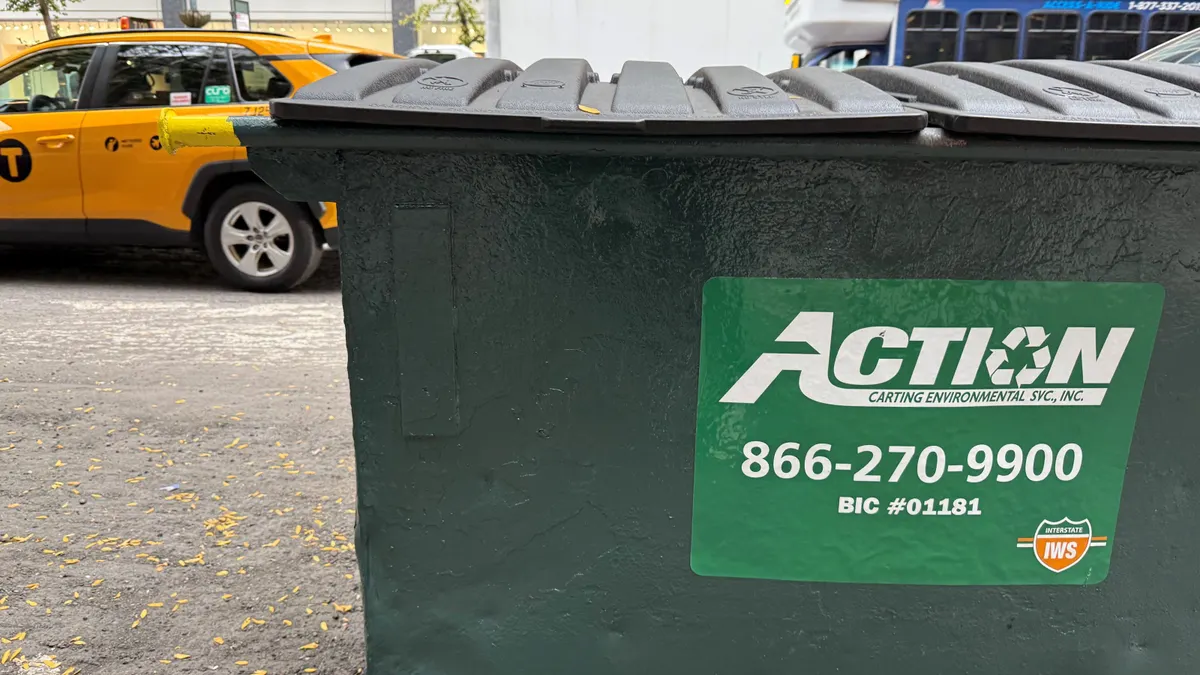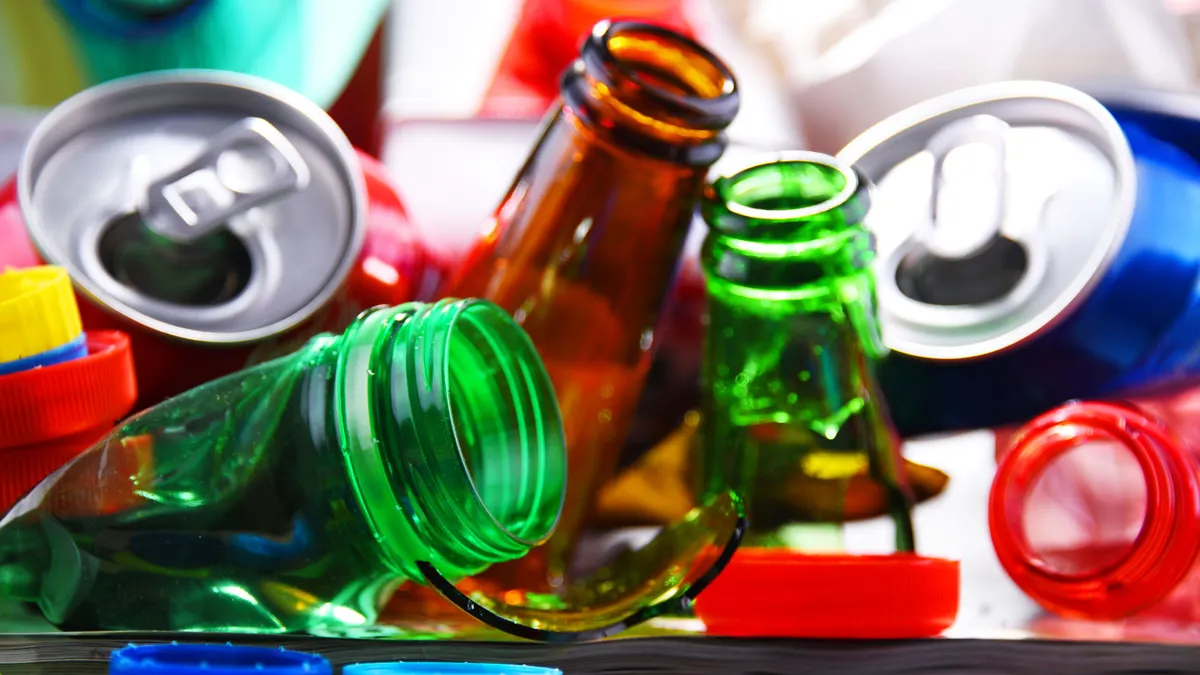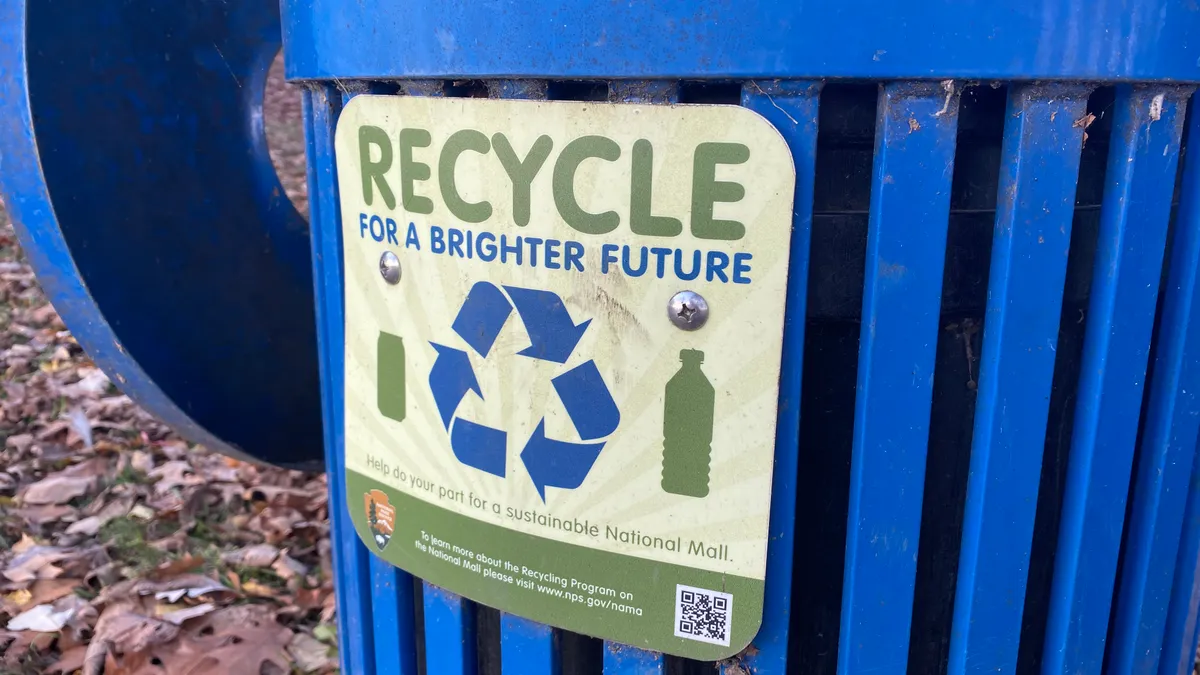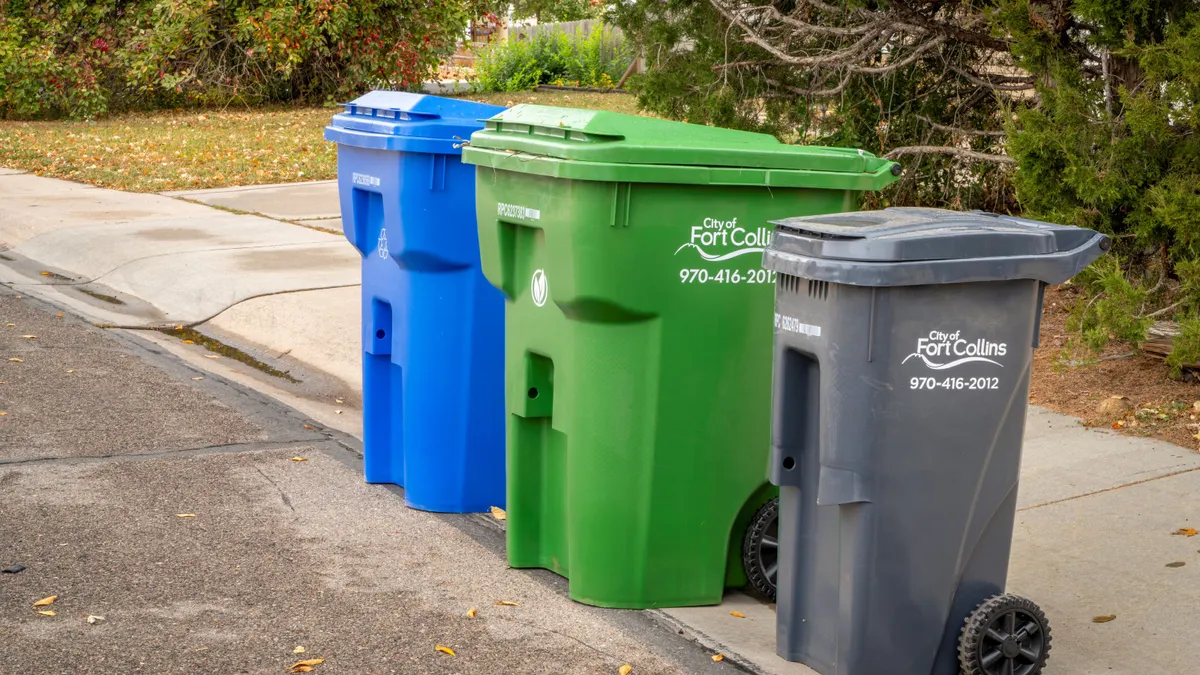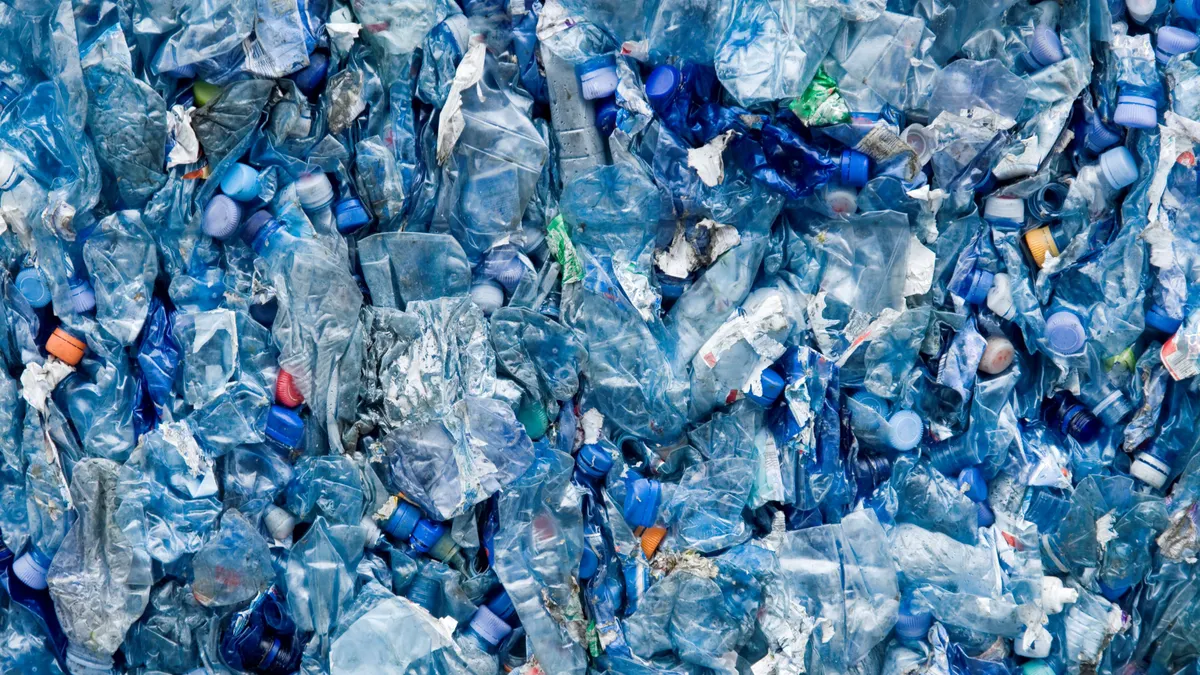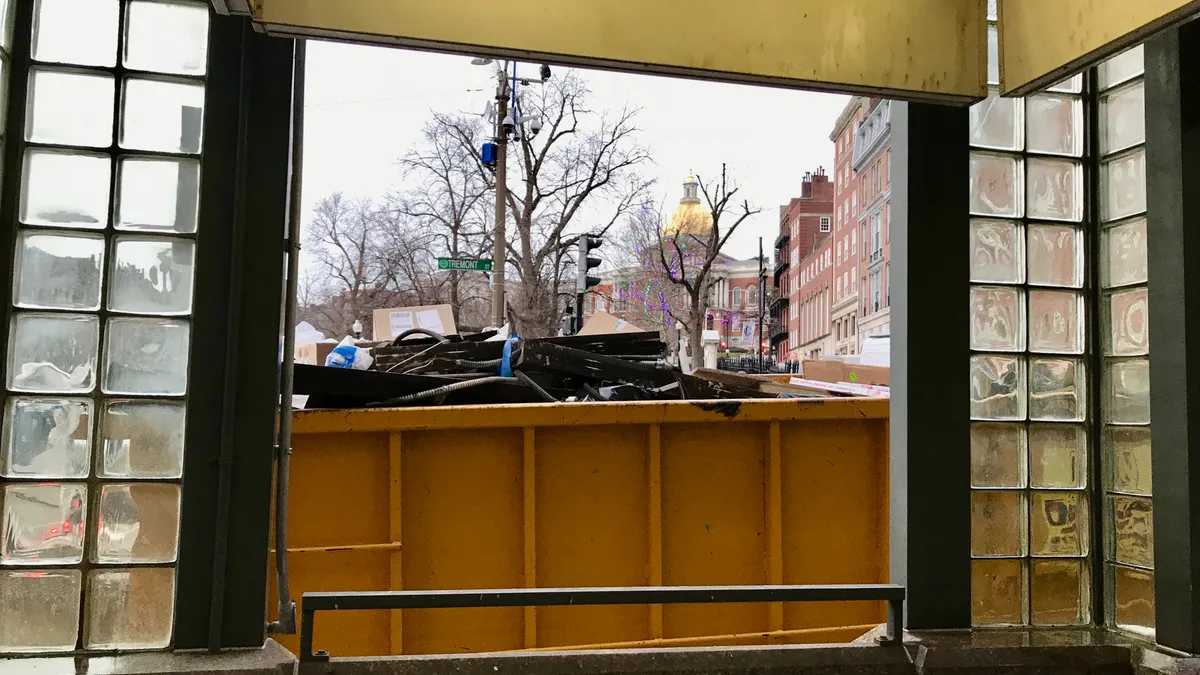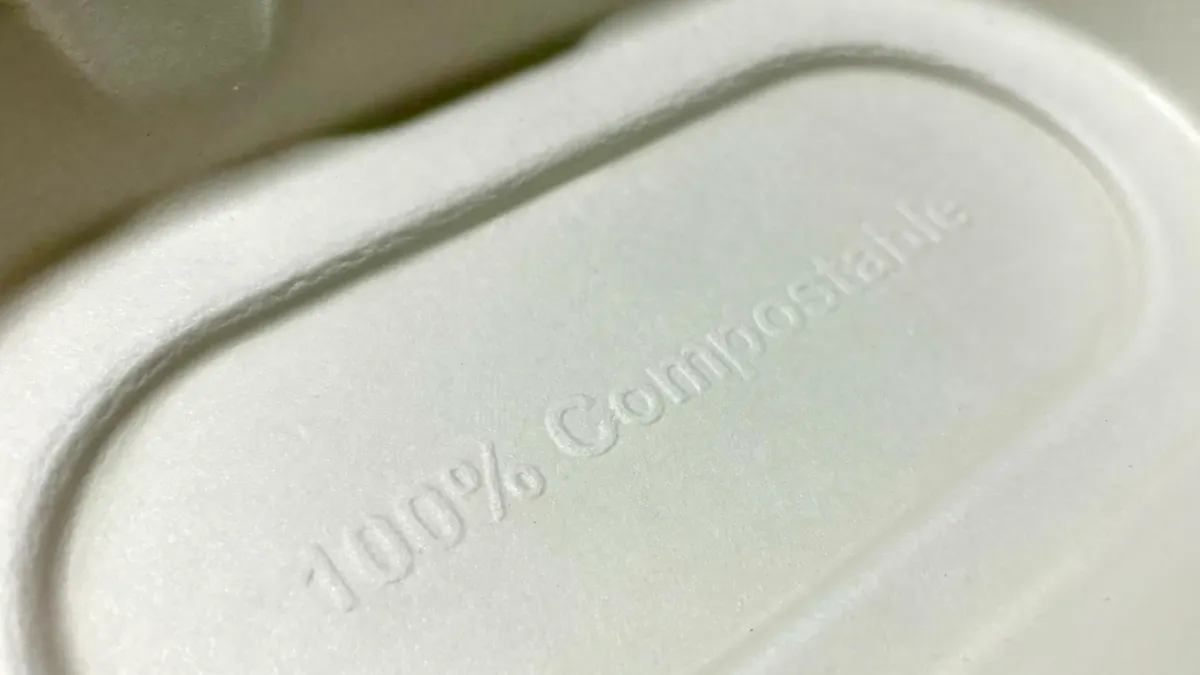Paper is a foundational material not only to modern recycling systems, but to the concept of recycling. Today, in municipal recycling systems, mixed paper is taking a beating.
Mixed paper accounts for at least 40% of the residential curbside recycling stream, according to research from The Recycling Partnership, and is often an even higher percentage of the volume processed at some MRFs. Yet the tsunami of recent price and market changes that has led to landfilling or incineration of this highly recyclable material is often overshadowed by stories focused on single-use plastics.
Succumbing to the bleak price outlook, Lexington, Kentucky is among the latest cities to drop mixed paper collection. It wasn't the first and may not be the last. From Maine to Hawaii, municipalities are struggling with how to handle their newspaper, junk mail, cartons, small cardboard and more.
Beyond budgets, the bigger effect of tumult in the mixed paper market may be in forcing municipalities to consider the social responsibility of curbside collection. What is sometimes viewed as just as an economic engine is actually a vital means for reducing greenhouse gas emissions and resource extraction related to products and packaging.
Environmental advocates and consumer groups have honed that link around plastics, but have not shone a similar spotlight on the loss of paper recycling around the country. That may change as the reverberations of China's import ban on mixed paper continue to be felt — unless domestic mill infrastructure grows quickly enough to meet growing demand for recycling.
Swinging prices, moving markets
Several experts told Waste Dive that losing China and other foreign markets as primary export destinations will strengthen the domestic fiber market in the long-term.
In fact, the American Forest and Paper Association (AF&PA) found domestic mills consumed more mixed paper in 2018 than in 2017. But pundits also say that municipalities will be grappling with the crashed paper market for years to come, as U.S. mills work to improve capacity.
"Everyone is trying to hang on. ... We will feel the ripple effects for years."

Brad Kelley
GBB senior project engineer
Because mixed paper is the largest category of material MRFs receive, price swings pack a bigger punch for fiber than other commodities, explains Brad Kelley, senior project engineer at consulting firm GBB.
"Everyone is trying to hang on" at the MRF level, he said — especially when prices for mixed paper fall into negative territory. The larger MRFs have more financial resources to buffer the effects – due to economies of scale – but Kelley said it's been tough across the board. When factoring in broader effects from plastic restrictions and quality standards, he said, "We will feel the ripple effects for years."
Bill Moore, president of Moore & Associates, estimates half a million metric tons of mixed paper collected for recycling ended up in U.S. landfills or incinerators last year.
India, Indonesia and other countries have absorbed some of the glut in supply, but total U.S. recovered fiber exports fell by 8.1% in the first-quarter of 2019 compared to 2017, reports PPI Pulp & Paper Week.
The barriers to increasing domestic capacity for mixed paper are largely technical. Over the past 20 years, as single-stream recycling became more commonplace, Chinese mills installed the sortation technology needed to handle many grades of paper (and increased contaminants). U.S. mills that didn’t shutter failed to keep up with the latest technology — but that's changing.
At the onset of China's import bans, some had predicted they would spur investment in U.S. infrastructure — and "that indeed is happening," according to Moore. A recently updated report from the Northeast Recycling Council tracked new or expanded capacity at 18 sites across North America.
Paper to package to purpose
Before this disruption, the makeup of residential mixed paper was already changing. Newspapers are slowly evolving into an artifact of the media; the volume of junk mail — direct marketing, in the parlance — has been declining. In 2011, the U.S. Postal Service delivered 80.4 billion pieces of marketing. Last year, that was down to 77.3 billion piece.
Because of the rise of Amazon and online shopping, OCC is a growing piece of the pie — particularly in MRFs that sort it as mixed paper. At the same time, demand for fiber for OCC production is also stoking demand for mixed paper. That's reflected in a 68.1% U.S. paper recovery rate for 2018 — a record high since AF&PA started tracking it in 1990.
While the mixed paper bale is changing and infrastructure for recovery is slowly improving, the economics are still very poor for MRFs. But Dylan de Thomas, vice president of industry collaboration at The Recycling Partnership, says the idea of municipal recycling programs as being free — or even a money-maker — is a myth.
"So you pay more to make recycling happen well, because it has a greater value to the economy and because it has a greater value to the environment."

Dylan de Thomas
The Recycling Partnership, collaboration vp
"That was never the case," he said. "But the key is that recycling has value, and it has much greater value than disposal. So you pay more to make recycling happen well, because it has a greater value to the economy and because it has a greater value to the environment."
Perhaps because the environmental effects of mismanaged plastics are more visible and visceral to consumers — particularly in the form of ocean and freshwater pollution — advocacy groups haven't responded vocally to cuts in collection programs.
Instead, some groups are focusing their energies on reducing production of non-essential paper products and advocating for more post-consumer fiber in categories where the percent of recycled content is still very low — such as printing and office office paper.
Green America, a nonprofit that advocates for environmentally sustainable business practices, is targeting paper receipts — particularly those coated with Bisphenol-A (BPA) or Bisphenol-S (BPS) — as well as long receipts (sometimes multiple feet) of the CVS or Walgreens ilk. Earlier this year, the group worked on a new bill in California that would require retailers to issue digital receipts as a default and provide paper copies only upon request.
Beth Porter, Green America’s climate and recycling director and author of Reduce, Reuse, Reimagine: Sorting Out the Recycling System, says the campaign is aimed at reducing wasteful and unnecessary paper consumption.
Despite the fact that receipts make up less than half a percent of all U.S. paper consumption, Porter sees them as a powerful symbol. "This campaign is similar to straws and bags," Porter added. "We're trying to interrupt this culture of disposables we have in the U.S."
The paper industry is offering a different narrative, framing the plastic pollution crisis as an opportunity to gain market share.
The Paper and Packaging Board, an industry check-off program, recently published a blog extolling the use of paper straws as an alternative to reusable straws (such as those made of steel or silicon). "There is no doubt paper and paper-based packaging will be called on even more in the weeks and months ahead," it said.
Still, de Thomas says he has not seen any indication that consumer brands, such as those that fund The Recycling Partnership, want to move wholesale from plastic to paper packaging because of consumer sentiment or market conditions.
He also believes that, despite the disruptions from China's policy changes, paper recycling is still going strong. Mixed paper may currently be the most challenging part of the recycling stream, but in terms of economics, mills across the country are still taking as much as they can.
"At the core of all of these recycling headlines is mixed paper. But that mixed paper is also a key component of the circular economy as it exists today — not some future, theoretical circular economy," said de Thomas. "At this very moment, when you're in Chattanooga and your curbside cart gets sorted out and goes to a WestRock mill, they are turning it into a cardboard box that then goes to the Amazon distribution center right down the road.”
Correction: A previous version of this article misstated mixed paper's percentage of total volume at various points in the recycling chain.




